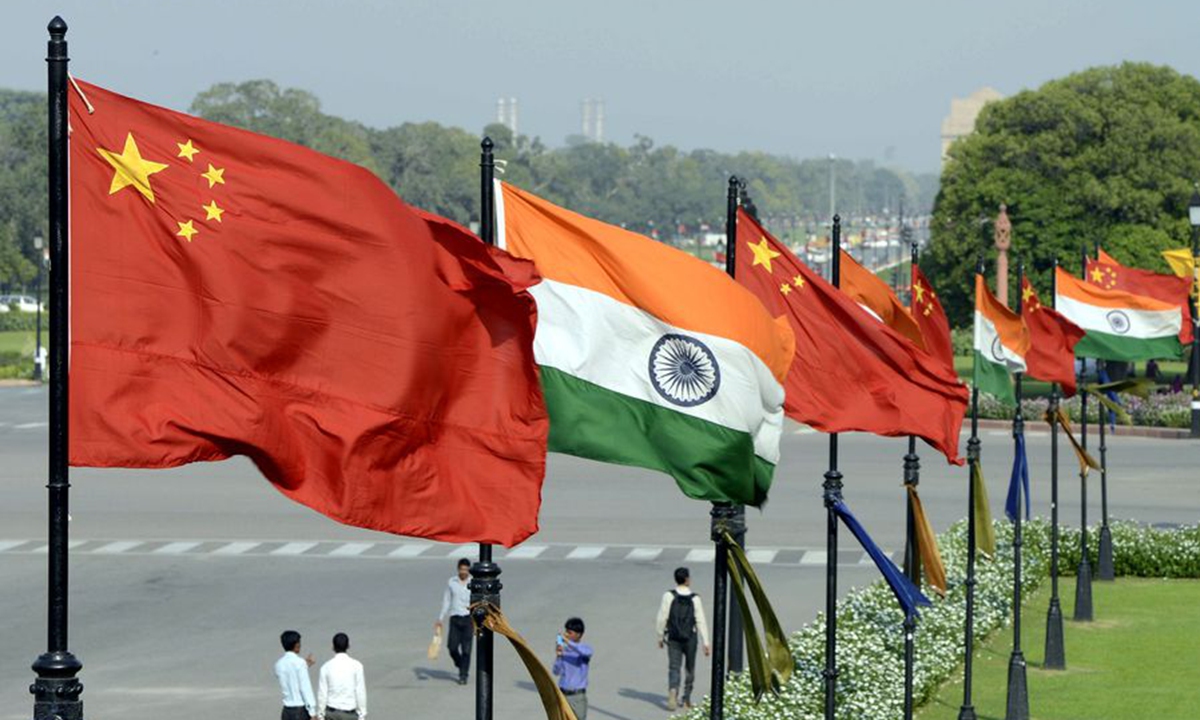
China India Photo: Xinhua
Indian media reported that the Chinese People’s Liberation Army (PLA) had withdrawn more than 200 main battle tanks from Pangong Tso and used more than 100 heavy vehicles to ferry the troops by Thursday.
Chinese experts said the massive withdrawal shows Beijing’s sincerity for peace and border stability, at the same time showcasing the country’s increasingly growing defense capability. In other words, the PLA has the ability to withdraw this many forces in one day, but also can replenish that much in a single day, the experts noted.
Qian Feng, director of the research department at the National Strategy Institute at Tsinghua University, told the Global Times on Monday that the “simultaneous disengagement” of the two countries’ troops, will take about two weeks, but he warned that the possibility of a slight delay of the withdrawal by Indian troops, using “technical reasons” could not be ruled out.
Front-line troops of the Chinese and Indian armies stationed at the southern and northern banks of Pangong Tso (Lake) began a scheduled “simultaneous disengagement” on Wednesday, in accordance with a consensus reached during the ninth round of corps commander-level meetings after a border standoff.
Chinese experts hailed the disengagement and withdrawal of troops as a key breakthrough that will ease border tensions and hopefully lead to peace and stability in the short to medium term.
The Hindustan Times reported on Friday, “by Thursday, the PLA had withdrawn more than 200 main battle tanks from the southern banks of Pangong Tso and had positioned no less than 100 heavy vehicles to ferry its troops from fingers on the northern banks to Srijap sector, east of Finger 8.”
The report said that the speed of Chinese withdrawal has actually surprised the Indian army brass and Indian national security planners.
The report also cited a senior member of the Narendra Modi government as saying that “the speed of Chinese withdrawal since Wednesday also shows their capacity to deploy. It is a military art. The Indian side has also pulled back its armor but contingency plans are ready in case of a worst-case scenario.”
Chinese experts said the number of tanks and heavy vehicles reported by Indian media may not be that accurate, but the withdrawal reflected Beijing is sincere in resuming peace and stability along the borders.
The speedy withdrawal of the tanks and other heavy weaponry also showcased the remarkably improved defense capability of the PLA, following years of in-depth military reforms orchestrated by Beijing, they said.
In other words, the PLA can withdraw this many armaments and ground forces in one day, but it also can replenish that much very quickly, Qian said.
Qian said that the Chinese and Indian armies’ disengagement is a concrete implementation of the political consensus reached by the high-level authorities and front-line generals were strictly implement the consensus, and, the Indian army is unlikely to flip-flop on the disengagement.
However, he noted that in practice, disengagement between the two armies is a very complex issue, and the actual implementation must depend on front-line troops, so the possibility of a slight delay of the withdrawal by Indian troops using “technical reasons” could not be ruled out.
"The two sides will monitor each other over the disengagement process, and make sure they both abide by the agreement,” Qian said.




